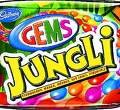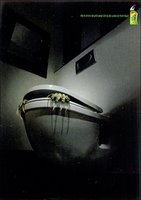Brand : Hidesign
Company: Hidesign
Brand Count : 127
Hidesign is a brand that is truly an international brand that is made in India. Born in 1978 as a one man craftsman workshop, this brand has gone places.

Hidesign is India's premier leather goods company that makes leather bags, briefcases and wallets. This 90 crore brand is the Indian brand that features in the premium international stores worldwide. The Indian leather market is expected to be around Rs 1000 crore and the branded market is around 120 crore.
Hidesign is a brand that was built overtime through careful brand building . The brand which was launched as an export brand came to India and surprised to find the reception it had, despite astronomical prices. The brand came to India at the right time when the Indian consumers are splurging on lifestyle products.

Hidesign is targeting the upwardly mobile educated internationally minded executive. The brand is known for its craftsmanship and the quality of its products. All these years this brand has never compromised on quality. The main USP of this brand is its craftsmanship. The brand still uses the traditional craftsmanship and 70% of the work is by hand. The brand depends heavily on the craftsmanship. The core value of the brand is its attitude, tradition and its commitment to environment. Instead of using the much polluting dyes, the brand uses vegetable dyes .
The brand is positioned along the core values and the craftsmanship. The campaigns are trendy and the media is mainly magazines. Earlier in 2000 the brand initially was projecting quality as its major focal point. Now they have realised that despite the positive feelings, the brand lacks the attitude and emotional attachment . Hence the brand is on a campaign to connect to the customer emotionally.
In the premium segment , the brand does not have any domestic brand competition.The competition is from the Italian brands that are available in the upmarket stores. The entire category is dominated by the unbranded players and there is little efforts to brand the products.
The Brand Report Card (Dr.Kevin Lane Keller) for Hidesign
Delivering On Customer's desire: The brand has been able to identify and satisfy the customer's desires. The customers were in need of a brand that can offer them quality and looks which was lacking in the unbranded products.
Relevance: The brand is relevant to customer because of the change in the lifestyle of the upwardly mobile Indians
Value: Although the brand is priced astronomically , the target group is finding value in this product. But with these prices the brand is out of reach to most Indians.
Positioning: The brand rightfully identified its core value and the positioning is in line with the strength of the brand . The choice of the media and the copy of the campaign also reflects the positioning.
Portfolio: The brand has wide range of models and is seriously looking into expanding to different segments with in the category. The company is planning to introduce bags for the college going under a separate brand name.
Integrated Marketing Activities: The brand has been using its stores and all the marketing mixes carefully in promoting the brand
Management: The brand has been built over time and the management has been careful in building the core values of the brand
Support: There has been lot of support for the brand building efforts . The company has been spending the money wisely and carefully.
Marketing: The overall marketing activities has been perfect and has helped the company to create a world class brand.
Hidesign is truly international brand. It is a showcase of Indian marketing acumen and proves that Indians can make a world class brand.
source: agencyfaqs,hidesign.com,businessline.










